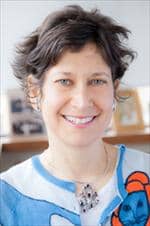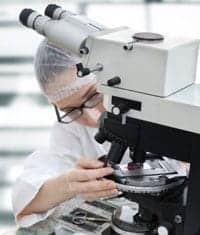 Rebecca Smith-Bindman, MDA team led by researchers from the University of California, San Francisco has called for simplified guidelines on when to biopsy thyroid nodules for cancer, which they say would result in fewer unnecessary biopsies.
Rebecca Smith-Bindman, MDA team led by researchers from the University of California, San Francisco has called for simplified guidelines on when to biopsy thyroid nodules for cancer, which they say would result in fewer unnecessary biopsies.
Their recommendation, based on a retrospective study published recently in JAMA Internal Medicine, is to biopsy patients only when imaging reveals a thyroid nodule with microcalcifications – tiny flecks of calcium – or one that is more than two centimeters in diameter and completely solid. Any other findings represent too low a risk to require biopsy or continued surveillance for cancer, the scientists concluded.
More than 98% of detected nodules in the study were benign, not malignant cancers.
“Compared with other existing guidelines, many of which are complicated to apply, following these simple, evidence-based guidelines would substantially decrease the number of unnecessary thyroid biopsies in the United States,” says lead author Rebecca Smith-Bindman, MD, a UCSF School of Medicine professor with the Department of Radiology and Biomedical Imaging and the Department of Epidemiology and Biostatistics. “Right now, we’re doing far too many thyroid biopsies in patients who are really at very low risk of having thyroid cancer,” she said.
The authors found that while 97% of the cancer patients had at least one nodule, 56% of patients without cancer had nodules as well. “Thus, it turns out that most patients have thyroid nodules,” said Smith-Bindman.

The time has come, she said, to “start doing diagnostic tests and procedures more selectively and prudently, as there are harms to doing unnecessary tests and procedures.” Smith-Bindman adds that in medicine, “we tend to focus on the individual patient who is front of us. We never want to miss anything, and therefore we want to do everything to diagnose every possible abnormality. But it doesn’t help our patients to do biopsy and surveillance on a type of nodule that’s found in 56% of all normal people.”
Smith-Bindman noted that thyroid biopsies are uncomfortable and anxiety-producing for patients, and require them to take time off from other activities. “Plus, they are often inconclusive,” she said. “And that can lead us down the path of open surgical biopsy, which is hardly trivial, and quite risky in itself, even in patients without cancer.”
The Surveillance, Epidemiology, and End Results (SEER) Program of the National Cancer Institute, estimates that 14,910 men and 45,310 women will be diagnosed with thyroid cancer in 2013 and that 1,850 men and women will die of it.
Co-authors of the study are Paulette Lebda, MD, of the Cleveland Clinic; Vickie A Feldstein, MD, of UCSF; Donna Sellami, MD, of Mills-Peninsula Hospital, San Mateo, CA; and Ruth B. Goldstein, MD, Natasha Brasic, MD, Changshi Jin, PhD and John Kornak, PhD, of UCSF.
[Source: UCSF]



